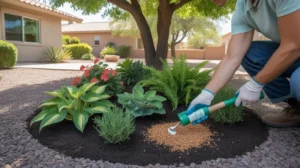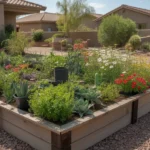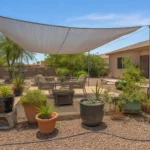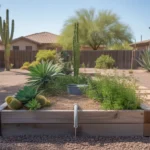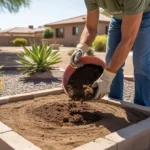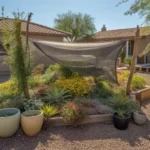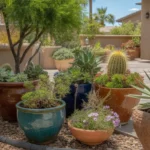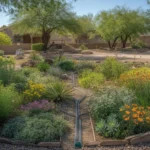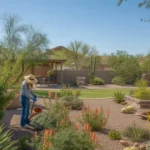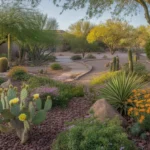As the intense heat of summer starts to wane in Mesa, late summer is the perfect time to show your shade garden some extra love with strategic fertilizing. Giving your plants the right nutrients as fall approaches helps them recover from summer stress and store energy for the cooler months ahead. With a few simple tips, you can keep your shade-loving plants lush and vibrant well into autumn.
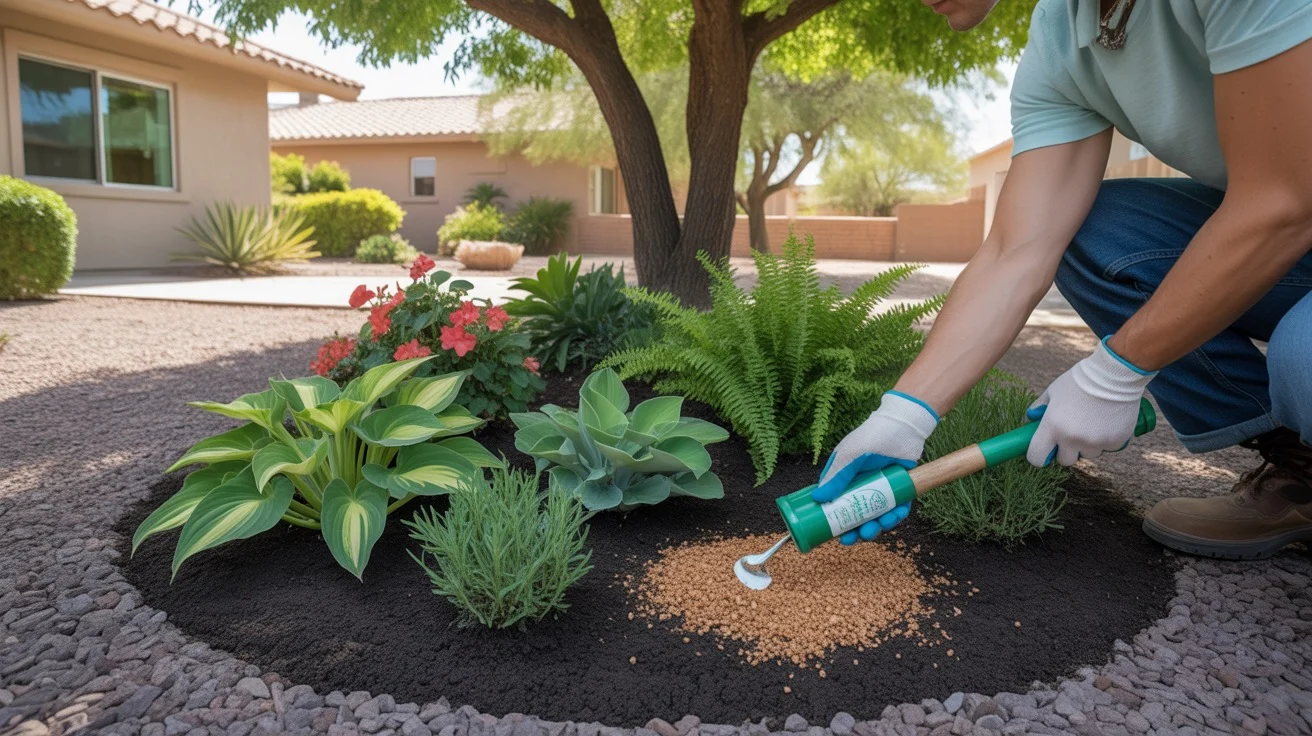
Assess Your Shade Garden’s Late Summer Needs
Before reaching for the fertilizer, take a close look at your shade garden to determine its specific needs. In Mesa’s hot, dry climate, even shade plants can struggle by late summer. Look for signs of heat stress like wilting, yellowing, or crispy leaf edges. Well-established trees and shrubs may not need much fertilizer, but potted shade plants, bedding annuals, and perennials will likely benefit from a nutrient boost.
Consider the type of shade plants you’re growing as well. Flowering shade annuals like begonias and impatiens are heavy feeders that appreciate regular fertilizing. Foliage plants like hostas and ferns have more modest nutrient needs. A little research into your specific plant varieties will help you dial in the optimal fertilizing approach.
Choose the Right Shade Fertilizer Formula
For late summer shade gardening in Mesa, opt for a fertilizer that’s slightly higher in phosphorus than nitrogen or potassium. Phosphorus supports healthy root development and flowering, which is especially important as fall approaches. A balanced, slow-release organic fertilizer with an NPK ratio around 5-7-3 is a good all-purpose choice for mixed shade gardens.
If you’re focusing on flowering shade annuals, you may want a fertilizer more specifically formulated for blooms, like a 10-20-10. For foliage-focused plants, a 14-14-14 provides an even nutrient balance. Acid-loving shade plants like azaleas and camellias do best with specialty fertilizers that help maintain soil pH around 5.5.
Feed Shade Plants at the Right Time
In Mesa, the best time for late summer shade garden fertilizing is typically early September, about 6-8 weeks before the first fall frost. This timing allows plants to metabolize the nutrients effectively without promoting tender new growth that could be damaged by cold.
Avoid feeding during the peak afternoon heat. Instead, fertilize shade plants in the early morning or evening when temperatures are cooler. Always water plants thoroughly a few hours before applying fertilizer to ensure they can absorb nutrients without risk of dehydration or root burn.
Apply Shade Fertilizer Properly
How you apply fertilizer to your Mesa shade garden depends on the product you choose and your plants’ growth habits. For granular fertilizers, use a handheld spreader to distribute a light, even layer over the soil surface, following package instructions for application rates. Scratch granules lightly into the top inch of soil, then water deeply to start the release process.
If you prefer liquid fertilizers, mix according to label directions and apply around the base of each plant, taking care not to splash on leaves. For potted shade plants, a half-strength liquid fertilizer applied every 2 weeks often yields better results than a single heavy feeding.
Shade Gardening Fertilizer Tips
- Go slow and steady. When fertilizing shade plants in late summer, err on the side of a lighter application. You can always add a bit more next month if needed, but it’s tougher to correct over-fertilizing.
- Prioritize struggling plants. If parts of your Mesa shade garden are thriving while others seem to be lagging, focus your late summer fertilizing efforts on the plants that need it most. A little extra TLC can help restore their vigor.
- Don’t forget the mulch. A 2-3 inch layer of organic mulch like shredded bark or compost helps shade plant roots stay cool and conserves moisture. As it breaks down, it also adds nutrients to the soil.
- Monitor moisture levels. Mesa’s intense heat can dry out shade gardens fast, especially in late summer. Consistent watering is key to keeping plants hydrated so they can utilize fertilizer effectively. Aim to keep soil evenly moist but not soggy.
- Watch for signs of over-fertilizing. If you notice a white crust on the soil surface or leaf tips turning brown and crispy, you may have applied too much fertilizer. Flush the soil thoroughly with water and avoid fertilizing again until spring.
Enjoy a Lush Late Summer Shade Garden
By fertilizing strategically in late summer, you can help your Mesa shade garden transition smoothly into fall. Well-nourished plants will be better equipped to withstand any lingering heat and produce a fresh flush of colorful blooms and foliage. Monitor your garden closely and make adjustments as needed to keep your shade plants looking their best as summer winds down.
With the right fertilizer applied at the right time, even the most sun-shy plants can be the stars of your Mesa landscape. By understanding your shade garden’s unique needs and following a few best practices, you can create a lush, lovely retreat that you’ll enjoy spending time in all season long.

